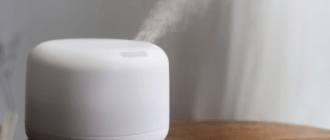How Do You Control Static Electricity in Your Home?
Are you tired of getting zapped every time you touch a doorknob or your pet’s fur? Static electricity is not just annoying, it can also damage your electronics and even start fires! Unfortunately, it’s a common problem in homes, especially during the dry winter months. But don’t worry, there are ways to control static electricity and keep yourself safe. In this blog post, we’ll explore some tips on how to tame those shocking sparks and make your home a more comfortable place to live in. So let’s get started!
What is Static Electricity and Why it’s a Problem in Homes
Static electricity is a phenomenon that occurs when two objects come into contact and transfer electrons between them. This results in one object becoming positively charged while the other becomes negatively charged, creating an electrical imbalance. In homes, static electricity can be caused by a variety of factors such as dry air, synthetic materials, and friction.
Factors that Contribute to Static Electricity in Homes
Static electricity is a common problem in many homes, and it can be caused by several factors. One of the main contributors to static electricity is dry air. When the air inside your home is dry, it allows electrons to build up on surfaces, creating a static charge that can result in shocks.
Another factor that contributes to static electricity is the type of flooring you have in your home. Carpets are known for their ability to generate static electricity due to their fibers rubbing together as people walk on them. Hardwood floors and tiles are less likely to create this kind of friction.
The clothes we wear and fabrics used in our homes also contribute significantly to the buildup of static charge. Synthetic materials like polyester and nylon tend to generate more static than natural fibers like cotton or wool.
Electronic devices such as computers and televisions also contribute towards building up electrostatic charges within homes since they generate electromagnetic fields when plugged into electric outlets.
Humidity levels play an essential role in controlling the level of electrostatic charges at home; low humidity causes too much dryness leading electrostatic buildup while high relative humidity discourages these builds-up by providing moisture for electron movements.
Ways to Control Static Electricity in Your Home:
Tip 1: Humidify the Air
Dry air is one of the primary causes of static electricity. Increasing humidity levels with a humidifier will help reduce static buildup in your home. Aim for a relative humidity level between 30% and 50%.
Tip 2: Use Fabric Softener or Dryer Sheets
Adding fabric softener or dryer sheets when doing laundry can also help prevent static cling on clothing and bedding. The chemicals in these products coat fabrics, making them less likely to create friction that leads to static buildup.
Tip 3: Wear Natural Fiber Clothing
Synthetic materials like polyester and nylon generate more static than natural fibers like cotton or wool. Wearing clothes made from natural fibers can significantly decrease the amount of electrical charge built up by clothes rubbing together.
Tip 4: Ground Yourself
Touching something grounded before touching surfaces prone to generating static charges like electronics, door handles, light switches, etc., allows any built-up charge on your body to dissipate harmlessly into the earth.
The Impact of Controlling Static Electricity in Your Home
Controlling static electricity in your home can have a significant impact on your daily life. Static electricity is not only annoying, but it can also be damaging to electronics and even pose a safety hazard. By following the tips to control static electricity at home, you can avoid these potential issues.
One of the biggest impacts of controlling static electricity is reducing damage to electronics. Static discharge can cause damage to sensitive components in electronic devices such as computers, televisions, and game consoles. By minimizing the buildup of static charge in your home, you will reduce this risk significantly.
Another benefit of controlling static electricity is avoiding unpleasant shocks when touching metal objects or other people. This may seem like a minor inconvenience but repeated exposure to electric shocks can lead to discomfort and anxiety.
Furthermore, reducing static buildup in clothing fibers can also make them less likely to cling together or stick uncomfortably against the skin. You’ll feel more comfortable wearing clothes without worrying about embarrassing situations where they cling too tightly!
In summary, by taking steps towards controlling static electricity in your home with the tips provided earlier in this article (Tip 1-4), you’ll enjoy a safer environment for both yourself and your electronic gadgets!
Conclusion
Static electricity can be a persistent problem in homes. However, with the right knowledge and tips to control it, you can minimize its impact on your daily life.
By following the tips outlined in this article, such as using humidifiers or dryer sheets, avoiding synthetic materials when possible, and grounding yourself before touching electronics or other potentially charged objects, you can significantly reduce the occurrence of static electricity in your home.
Not only will controlling static electricity make your environment more comfortable and enjoyable to live in, but it may also help prolong the lifespan of some electronic devices by preventing damage caused by electrical discharge.
So why not take action today? Implement these simple yet effective tips into your routine and start enjoying a more harmonious living space free from the pesky effects of static electricity!





